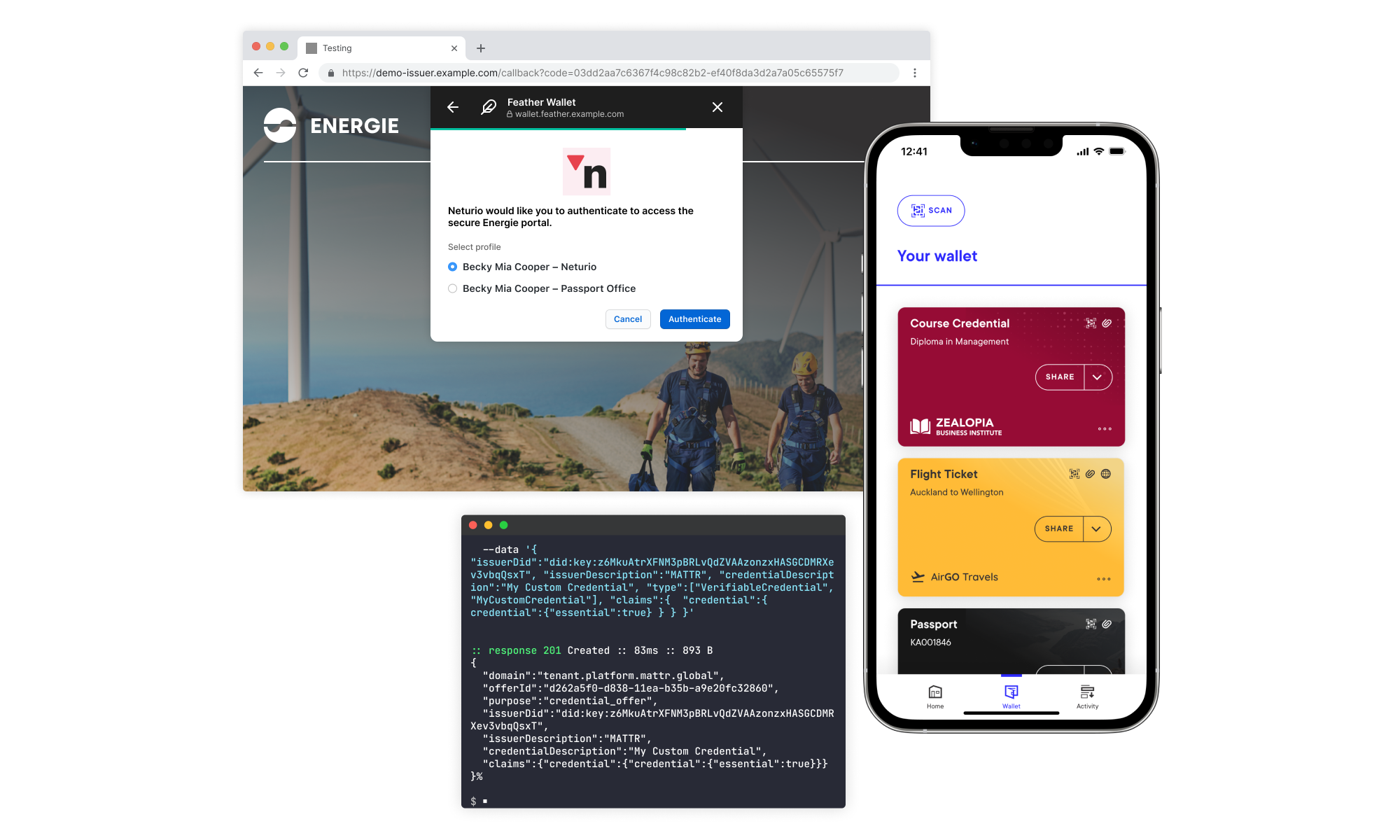Digital wallets
Introduction
In order to coordinate the authentication needs of apps and services on the web, many of today’s users will leverage services such as password managers. These tools help users keep track of how they’ve identified themselves in different contexts and simplify the login process for different services. In many ways, the need to overlay such services in order to preserve non-negotiable security properties reflects the broken state of identity on the internet today. Users of these apps (i.e. the data subjects) are often an afterthought when a trust relationship is established between data authorities and apps or services consuming and relying on user data.

Asymmetry in the nature of the relationships between participants largely prevents users from asserting their data rights as subjects of the data. Users are left to deal with the problems inherent in such a model, foisting upon them the responsibility of implementing appropriate solutions to patch over the shortcomings of identity management under this legacy model.
The emerging web of trust based upon self-certifying identifiers and user-centric cryptography is shifting this fundamental relationship by refashioning the role of the user. This role (known in the VC data model as a “holder”) is made central to the ecosystem and, importantly, on equal footing with the issuers of identity-related information and the relying parties who require that data to support their applications and services.
The reframing of the user as a first-class citizen and their empowerment as ‘holder’ represents a shift towards a new paradigm. Such a paradigm offers users greater sovereignty of their own information and empowerment to manage their digital identity. Users are able to exercise their new role in this ecosystem by utilising a new class of software known as digital wallets.
Digital wallets are applications that allow an end user to manage their digital credentials and associated cryptographic keys. They allow users to prove identity-related information about themselves and, where it’s supported, choose to selectively disclose particular attributes of their credentials in a privacy-preserving manner.
Wallets and agents
When working with technology standards that are inherently decentralised, it’s important to establish a common context and consensus in our choice of terminology and language. Convergence on key terms that are being used to describe concepts within the emerging decentralized identity and self-sovereign identity technologies allows participants to reach a shared understanding. Consequently, participating vendors are able to understand how they fit into the puzzle and interoperability between vendor implementations is made possible.
Through dedicated research and careful coordination with the broader technical community, the Glossary Project at DIF offers a useful definition for both wallets and agents.
Wallets
Provide storage of keys, credentials, and secrets, often facilitated or controlled by an agent.
Agents
An agent is a software representative of a subject (most often a person) that controls access to a wallet and other storage, can live in different locations on a network (cloud vs. local), and can facilitate or perform messaging or interactions with other subjects.
The two concepts are closely related, and are often used interchangeably. In short, the Glossary Project found that an agent is most commonly a piece of software that lets you work with and connect to wallets. Wallets can be simple, while agents tend to be more complex. Agents often need access to a wallet in order to retrieve credentials, keys, and/or messages that are stored there.
At MATTR, we tend to use the terms 'digital wallet' or simply 'wallet' to holistically describe the software that is utilised by end-users from within their mobile devices, web browsers, or other such user-controlled devices or environments. A digital wallet can be thought of as a kind of agent, though we try to make the distinction between the software that sits on a user’s device and the data managed and logic facilitated by a cloud-based platform in support of the wallet’s capabilities. We like the term 'wallet' because it is analogous to real-world concepts that by and large parallel the primary function of a wallet; to store and retrieve identity-related information.
User-centric design
As end users have often found themselves the casualty of the information systems used by the modern web, there has been little opportunity to allow users to directly manage their data and negotiate what data they wish to withhold or disclose to certain parties. Under the new web of trust paradigm, the rights of the data subject are codified in standards, processes, and protocols guaranteeing the user the power to exercise agency. The interjection of the wallet to support end-users as data subjects on equal footing with issuers of identity information and relying parties provides an indispensable conduit and control point for this information that enables new opportunities for user-centric design.
The innovation in this area is only just beginning and there is no limit to the kinds of new experiences application developers can design and deliver to users. Some examples include:
Allowing users to synchronise their data across multiple applications
Allowing users to self-attest to a piece of data or attest to data self-asserted by peers
Allowing a user to explicitly give consent around how their data may be used
Allowing users to revoke their consent for access to the continued use of and/or persistence of a particular piece of data
Allowing users to opt-in to be discoverable to other verified users, provided they can mutually verify particular claims and attributes about themselves
Allowing users to opt-in to be discoverable to certain service providers and relying parties, provided they can mutually verify particular claims and attributes about themselves
These are just a handful of the potential ways that developers can innovate to implement user-centric experiences. MATTR offers the tools necessary to create new kinds of wallet and authentication experiences for users and we’re excited to see what developers come up with when given the opportunity to create applications and services inspired by these new standards and technologies.